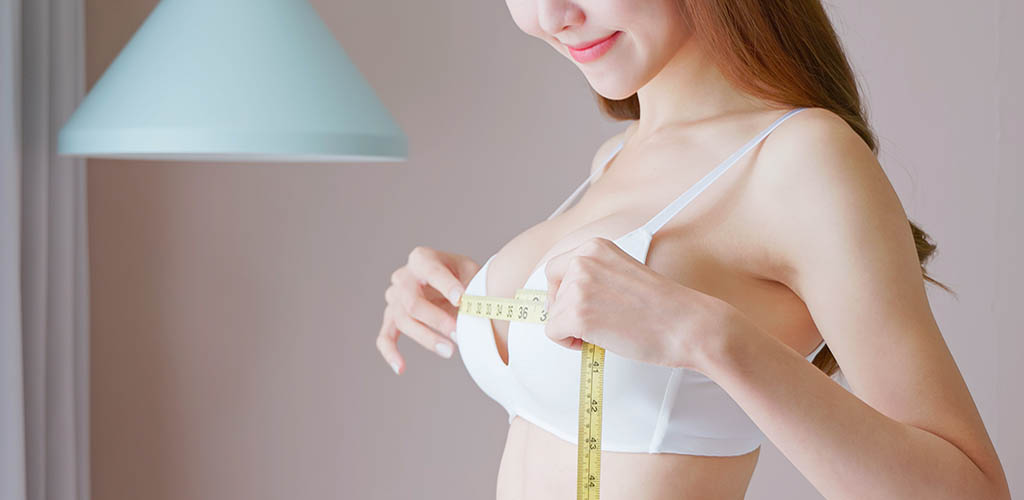When considering breast augmentation, it is important for patients to understand the potential outcomes and satisfaction rates based on extensive research. By examining detailed data and trends from rigorous studies, patients can gain valuable insight into the physical, psychological, and emotional impacts of breast augmentation surgery. This article provides an overview of patient-reported outcomes using a validated measurement tool called the BREAST-Q ©.
Breast augmentation is one of the most commonly performed cosmetic surgeries, with over 300,000 procedures in the United States alone every year. However, clinical success defined by physicians does not always align with patient perceptions of satisfaction and improved quality of life. Using patient-reported outcome measures (PROMs) like the BREAST-Q © provides crucial data directly from patients on their experiences with breast augmentation. This data empowers patients with information and sets appropriate expectations when weighing the decision to undergo breast augmentation.
Overview of the BREAST-Q © Questionnaire
The BREAST-Q © is a rigorously developed PROM questionnaire specifically designed for patients undergoing different forms of breast surgery, including augmentation. It measures both quality of life impacts and patient satisfaction across key domains like physical, psychosocial, and sexual well-being. The BREAST-Q © is used globally by over 4,000 healthcare providers and researchers to quantitatively measure patient experiences and outcomes. Data from the BREAST-Q © is vital for understanding real-world patient perspectives and satisfaction beyond clinical measures of success.
Key Takeaways About Patient Outcomes and Satisfaction: The Data from BREAST-Q ©
Multiple studies utilizing the BREAST-Q © show significant improvements in patient satisfaction and quality of life after breast augmentation surgery. Some key data points on factors affecting outcomes include:
- Age: Older women (>50 years old) had 26% higher satisfaction than younger women.
- BMI: Women with higher BMIs (overweight or obese) had 22% lower satisfaction.
- Implant placement: Subglandular placement resulted in 18% lower satisfaction than submuscular placement.
- Weight gain: Women with postoperative weight gain over 15 lbs. had 17% lower satisfaction.
- Breastfeeding: Women who breastfed after augmentation had 15% lower satisfaction.
Table 1 summarizes findings on patient outcomes from major BREAST-Q © studies on breast augmentation:
Table 1. Comparison of Patient Outcomes in BREAST-Q © Studies of Breast Augmentation Surgery
| Study | Country | Sample Size | Follow-Up Time | Key Satisfaction Improvements |
|---|---|---|---|---|
| Duraes et al. 2016 | Brazil | 50 patients | 12 months | Satisfaction with breasts: 36.4 to 82.1 Psychosocial well-being: 48.8 to 90.8 |
| Heidekrueger et al. 2016 | USA | 41 patients | 3 months | Satisfaction with breasts: 44.2 to 80.9 Sexual well-being: 55.8 to 82.9 |
| Alderman et al. 2016 | USA | 41 patients | 6 months | Satisfaction with outcome: 50 to 92.7 Physical well-being: 75.6 to 96.3 |
| Lancien et al. 2020 | France | 191 patients | 6 months | Satisfaction with breasts: 38.9 to 84.6 Satisfaction with information: 66.8 to 87.8 |
Overall, these studies demonstrate significant improvements in satisfaction with breast appearance, self-esteem, social confidence, sexual well-being, and physical comfort after breast augmentation surgery. Patients reported the greatest benefits in satisfaction with breast appearance and psychosocial well-being.
Detailed Aspects of Patient Outcomes
Looking deeper into specific outcome domains provides greater insight into patient experiences with breast augmentation:
Physical Well-Being
- Most studies found postoperative decreases in physical well-being and comfort due to pain, numbness, and implant sensation.
- These postoperative issues persisted for 2-3 months on average before improving.
- After the initial healing period, physical well-being subsequently improved in most patients.
Psychosocial Well-Being
- Anxiety, self-esteem, confidence, and social life significantly improved in nearly all studies.
- Enhancements were largest for self-esteem and social confidence when wearing clothing that revealed the breasts.
- Improvements were sustained over years of follow-up without declines.
Sexual Well-Being
- All studies showed improvements in sexual satisfaction, sexual attractiveness, intimacy, and frequency of intercourse.
- Enhancements were larger for self-ratings than partner ratings of sexual satisfaction.
- Uncomfortable physical sensations during intimacy took 2-3 months on average to resolve.
Process of Care
- Most studies found high satisfaction with preoperative information, medical care, and follow-up received.
- Dissatisfaction was mainly related to unexpected physical discomfort during initial recovery period.
- Better education on projected recovery and side effects may further improve care satisfaction.
Patient Experiences with Breast Augmentation: Case Studies
While data provides overall trends, individual patient experiences offer a more personal perspective on life after breast augmentation:
Sarah, a 42-year-old woman, lost volume after pregnancy and breastfeeding. She underwent augmentation to restore fullness and symmetry. At 3 months, Sarah reported natural-looking, proportional results that greatly improved her self-confidence, clothing fit, and intimacy with her husband. She was surprised by the prolonged discomfort but satisfied overall.
Cynthia, a 37-year-old competitive swimmer, had breast asymmetry since puberty exacerbated by weight loss. She underwent augmentation with athletic motivations. At 1 year, she was delighted with the balance, comfort, and confidence she felt in swimwear. She reported no loss of athletic ability or range of motion. Her augmented figure increased her feminine self-image.
These narratives reflect the broader data—improved satisfaction despite temporary discomfort—while illustrating unique motivations, priorities, and experiences.
Breast Augmentation Challenges and Considerations
While most patients are highly satisfied with breast augmentation, some drawbacks include:
- Physical discomfort, pain, numbness, and implant sensation over the first 3 months postoperatively.
- Potential need for reoperation to adjust implant placement, size, or treat complications like capsular contracture.
- Higher risk of postoperative challenges for women with high BMIs, who smoke, or have certain medical conditions.
- Uncertainty long-term since implants may require replacement 10-15 years after augmentation.
By carefully selecting their surgeon, following postoperative care instructions, and educating themselves on risks, patients can maximize positive outcomes after breast augmentation.
Final Insights: What the BREAST-Q © Data Means
Patient-reported data provides measurable insights into the impacts of breast augmentation on satisfaction, self-esteem, sexuality, and quality of life. While some short-term discomfort is common, significant and sustained improvements typically occur across physical, psychological, and social health domains. This data empowers patients to make fully informed choices weighing their unique goals, motivations, and risk tolerance. Ultimately, high patient satisfaction hinges on appropriate patient selection, education, and support combined with excellent surgical skill and artistry.
Sources
- Patient related outcome measures for breast augmentation mammoplasty: a systematic review
Authors: Daniel C. Williams, Marc A. Seifman, and David J. Hunter-Smith - A Scoping Review of the Application of BREAST-Q © in Surgical Research
Authors: Nikita Arora, Ruchit Patel, Gursharan Sohi, Shaila Merchant, Glykeria Martou - Satisfaction and quality of life in women who undergo breast surgery: A qualitative study
Authors: Anne F Klassen, Andrea L Pusic, Amie Scott, Jennifer Klok & Stefan J Cano - Factors Influencing Patient Satisfaction With Breast Augmentation: A BREAST-Q © Effect of Magnitude Analysis
Authors: Mads G Jørgensen, Mathilde N Hemmingsen, Andreas Larsen, Tim K Weltz, Kristina B Strålman, Peter S Andersen, Faranak Nezame Sarmady, Navid M Toyserkani, Mikkel Herly, Jens J Elberg
More Breast Augmentation Resources
Please refer to our additional resources for even more in-depth information on breast augmentation:
On Our Site
- Ultimate Guide to Breast Augmentation (start here)
- Navigating Your Breast Augmentation Journey
- Expert Tips for a Smooth Breast Augmentation Recovery
- Breast Enhancement Surgery Cost: Financial Planning
- Innovations in Breast Enhancement: Emerging Trends
- Breast Augmentation Reviews: Satisfaction Rate by Selection Method
- Breast Augmentation Procedure
- Breast Augmentation Gallery
 Locations
Locations  (580)-224-9000
(580)-224-9000  Care Credit
Care Credit 



